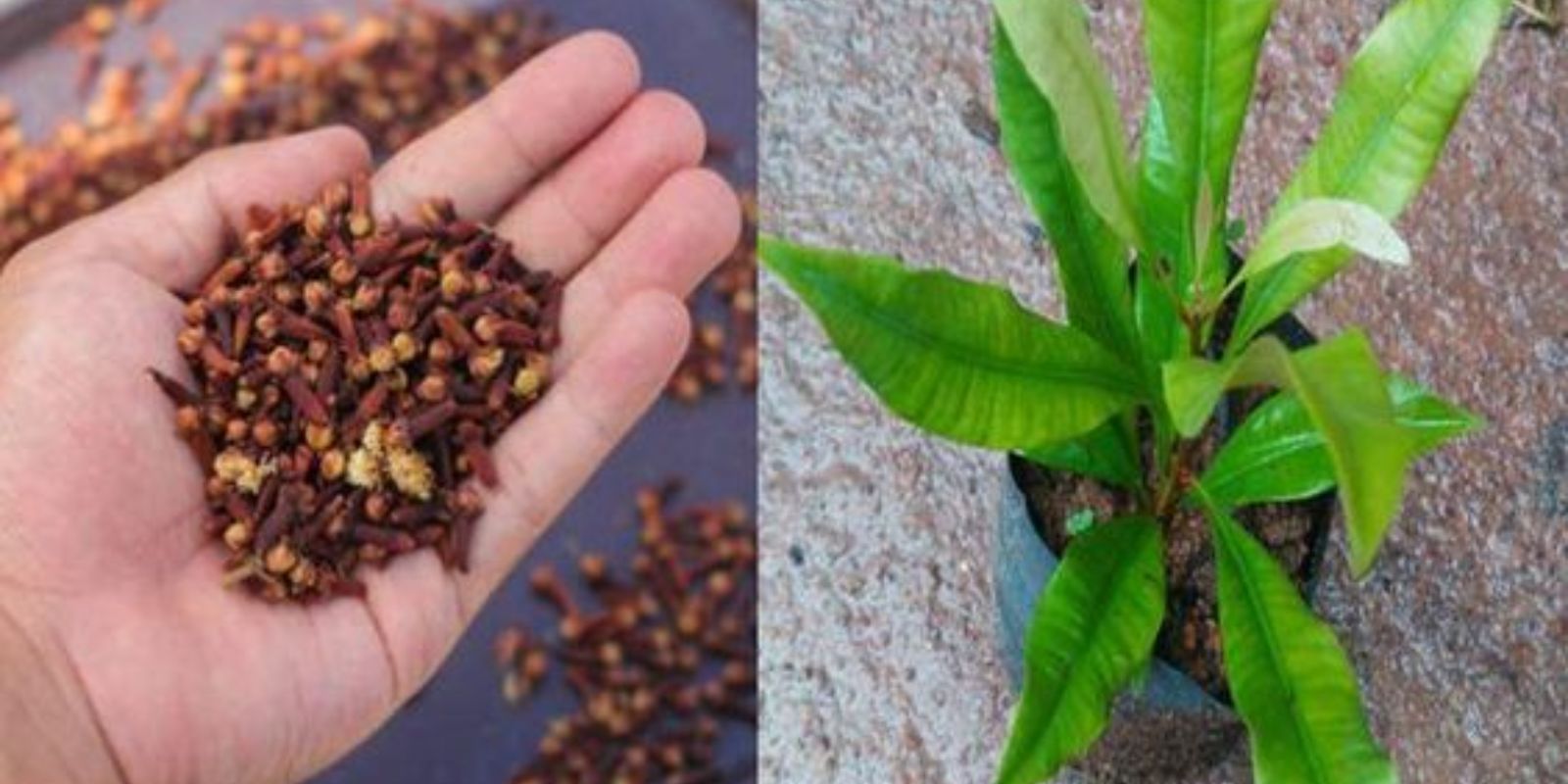Growing clove plants at home can be a rewarding and aromatic addition to your garden. Cloves are not only prized for their distinctive flavor and medicinal properties but also add a touch of exotic flair to your home garden. This guide will walk you through the steps of growing clove plants from seeds to harvesting your own spice.
Introduction to Clove Plants
Clove (Syzygium aromaticum) is a tropical evergreen tree renowned for its aromatic flower buds, which are harvested and dried to produce cloves—a popular spice used in cooking, baking, and traditional medicine. Native to the Spice Islands of Indonesia, clove plants thrive in warm, humid conditions and can grow up to 30 feet tall in their natural habitat. However, with the right care, you can successfully cultivate clove plants in your home garden or indoors.
Step-by-Step Guide to Growing Clove Plants
1. Obtaining Clove Seeds
The journey begins with acquiring clove seeds. These seeds can be sourced from specialty garden stores, online nurseries, or even from whole cloves purchased at the store. When choosing seeds, ensure they are fresh and viable for the best results.
- Soaking Seeds: To improve germination rates, soak the clove seeds in water for 24 hours before planting. This process helps to soften the seed coat and encourages faster sprouting.
2. Preparing the Soil
Clove plants require well-draining soil enriched with organic matter. The soil should be slightly acidic to neutral, with a pH range of 5.5 to 7.0. You can achieve this by mixing garden soil with compost or well-rotted manure.
- Soil Preparation: Ensure the soil is loose and well-aerated to promote healthy root growth. If growing in pots, use a high-quality potting mix that provides good drainage.
3. Planting the Seeds
Clove seeds can be planted either directly in the garden or in pots. If planting outdoors, choose a location with full sun to partial shade. In cooler climates, starting the seeds indoors is preferable.
- Sowing Seeds: Plant the seeds about 1 inch deep in the soil. Space the seeds 6-12 inches apart if planting directly in the garden. For container gardening, plant 2-3 seeds per pot and thin them out later.
- Covering Seeds: Gently cover the seeds with soil and water them lightly. Keep the soil consistently moist but not waterlogged.
4. Providing Warmth and Moisture
Clove plants thrive in warm, humid conditions. They prefer temperatures between 70-85°F (21-29°C). To mimic these conditions, ensure your seeds receive adequate warmth and moisture.
- Temperature and Light: Place pots or garden beds in a sunny location. If growing indoors, use grow lights to supplement natural sunlight. Maintain a consistent temperature, avoiding cold drafts and sudden temperature changes.
- Humidity: Clove plants appreciate high humidity. If you’re growing them indoors, consider using a humidifier or placing a tray of water near the plants to increase moisture levels.
5. Caring for Your Clove Plants
Once your clove plants begin to grow, proper care is essential for their health and productivity.
- Watering: Water the plants regularly to keep the soil moist. Be cautious not to overwater, as this can lead to root rot. Allow the top inch of soil to dry out between waterings.
- Fertilizing: Feed your clove plants monthly with a balanced, water-soluble fertilizer. Organic options like compost tea or fish emulsion can also be beneficial. Avoid over-fertilizing, which can lead to excessive leaf growth at the expense of flower development.
- Pruning: Prune the plants as needed to maintain their shape and remove any dead or damaged branches. Pruning helps to promote healthy growth and improves air circulation around the plant.
6. Pest and Disease Management
Clove plants are relatively hardy but can be susceptible to certain pests and diseases. Regular monitoring and prompt action can prevent major issues.
- Common Pests: Watch for pests such as aphids, spider mites, and whiteflies. Use insecticidal soap or neem oil to manage infestations.
- Diseases: Clove plants may encounter fungal diseases like powdery mildew or root rot. Ensure proper spacing, good air circulation, and avoid overhead watering to minimize the risk of disease.
7. Harvesting Cloves
Clove plants typically take several years to mature and produce buds. The buds are harvested when they turn pink and are then dried to produce the familiar spice.
- Harvest Time: Wait until the buds are firm and have developed a reddish-brown color. Harvest the buds by cutting them from the plant with a clean, sharp knife.
- Drying: Spread the harvested buds in a single layer on a clean, dry surface. Allow them to air-dry in a well-ventilated area away from direct sunlight. Once fully dried, store the cloves in airtight containers to preserve their flavor and aroma.
Benefits of Growing Cloves at Home
Growing clove plants at home offers several benefits:
- Fresh Spice: Enjoy the flavor and aroma of freshly harvested cloves in your cooking and baking.
- Medicinal Uses: Cloves have been used in traditional medicine for their antimicrobial and analgesic properties.
- Aesthetic Appeal: Clove plants add an exotic touch to your garden or indoor space with their glossy leaves and aromatic buds.
Conclusion
Growing clove plants at home is a gratifying endeavor that combines gardening with the pleasure of harvesting your own spices. By following these steps—from seed preparation to harvest—you can successfully cultivate clove plants and enjoy their unique flavor and benefits. Whether you’re an experienced gardener or a beginner, the process of growing cloves will add a new dimension to your gardening experience.
Start your journey to cultivate these aromatic wonders today. Share your gardening experiences or ask for tips below—let’s grow together and make your garden blossom with the spice of success! 🌱🌟

